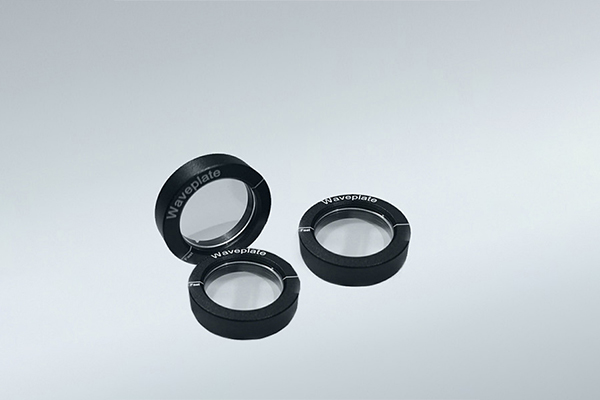Introduction to Optically Contacted Zero-Order Wave Plates
Optically contacted zero-order wave plates play a vital role in a variety of optical applications, their unique structure and properties resulting in unparalleled performance. Below, we will briefly describe the complex construction of optically contacted zero-order wave plates and explore their structure, advantages, and applications in modern optics.

What is an optically contacted zero-order wave plate?
An optically contacted zero-order wave plate is an advanced optical device constructed from two quartz plates with intersecting fast axes. The optical contact method employed in its construction ensures an epoxy-free optical path, which is crucial for maintaining high optical clarity and performance. The thickness difference between the two wave plates determines the retardation, a key factor in the wave plate’s functionality. Unlike multi-order wave plates, zero-order wave plates exhibit significantly reduced dependence on temperature and wavelength variations, making them ideal for precision applications.
Features of Optically Contacted Zero-Order Wave Plates
1. Optical Contact, No Glue Required
Optical contact eliminates the need for glue, ensuring a clean, impurity-free optical path. This structure enhances the waveplate’s durability and optical performance, making it suitable for high-risk applications.
2. Double Retardation Plate
Double retardation plates enable precise control of optical phase retardation. This is crucial for applications requiring precise control of light polarization.
3. Wide Spectral Bandwidth
Optically contacted zero-order waveplates are designed to operate over a wide spectral bandwidth, accommodating a wide range of wavelengths. This versatility is beneficial for applications requiring adaptation to different light sources.
4. Wide Temperature Bandwidth
These waveplates feature a wide temperature bandwidth, maintaining their performance under a wide range of environmental conditions. This feature is particularly beneficial for applications subject to fluctuating or extreme temperatures.
5. High Damage Threshold
Optically contacted zero-order waveplates have a high damage threshold, allowing them to withstand impact from intense laser beams and other high-energy light sources. This robustness ensures long life and reliability in demanding optical applications.
Advantages over Multi-Order Waveplates
Zero-order waveplates offer numerous advantages over multi-order waveplates, primarily being less sensitive to temperature and wavelength variations. This stability makes them ideal for applications where precision and consistency are critical. Additionally, the epoxy-free optical path ensures exceptional optical clarity, reducing the risk of deformation or performance degradation over time.
Applications of Optically Contacted Zero-Order Wave Plates
Laser Systems
In laser systems, optically contacted zero-order wave plates are used to control the polarization state of laser beams. Their high damage threshold makes them suitable for high-power laser applications, ensuring reliable performance without compromising the integrity of the optical path.
Scientific Research
Optically contacted zero-order wave plates are essential in scientific research, especially in experiments requiring precise control of light polarization. Their stable performance across temperature and wavelength makes them ideal for precision-critical laboratory environments.
Industrial Applications
In industrial settings, these wave plates are used in optical measurement systems, quality control processes, and other applications requiring precise optical manipulation. Their durability and reliability make them a top choice for long-term use in harsh environments.
How to Choose the Right Wave Plate
When selecting a wave plate, consider the following factors:
Retardation Type: Determine whether a half-wave plate, quarter-wave plate, or a specialized retardation type is required.
Size and Operating Wavelength: Ensure the wave plate meets the size and wavelength requirements of your application. Waveplate Type: For applications where temperature and wavelength bandwidth are critical, a zero-order waveplate or true zero-order waveplate is recommended. For cost-sensitive applications, a multi-order waveplate may be sufficient.
Conclusion
Optically contacted zero-order waveplates are a cornerstone of optics, providing high precision, reliability, and versatility in a wide variety of applications. Their unique structure and properties make them an indispensable component in laser systems, telecommunications, scientific research, and industrial applications. As technology continues to advance, the importance of these waveplates will only grow, highlighting the need for continuous innovation and excellence in optical design.
